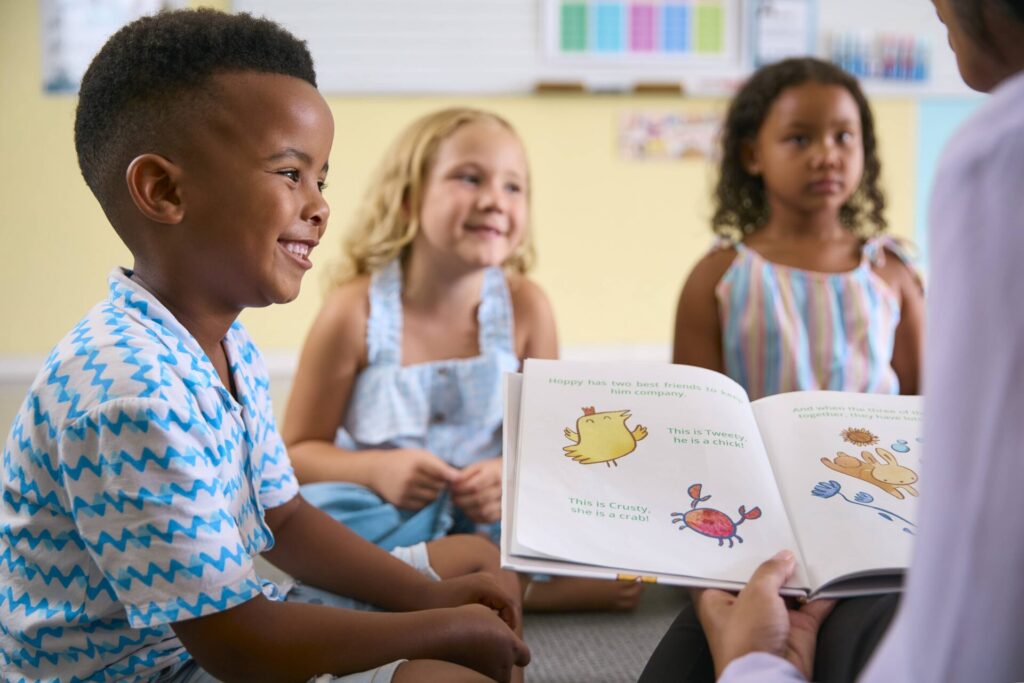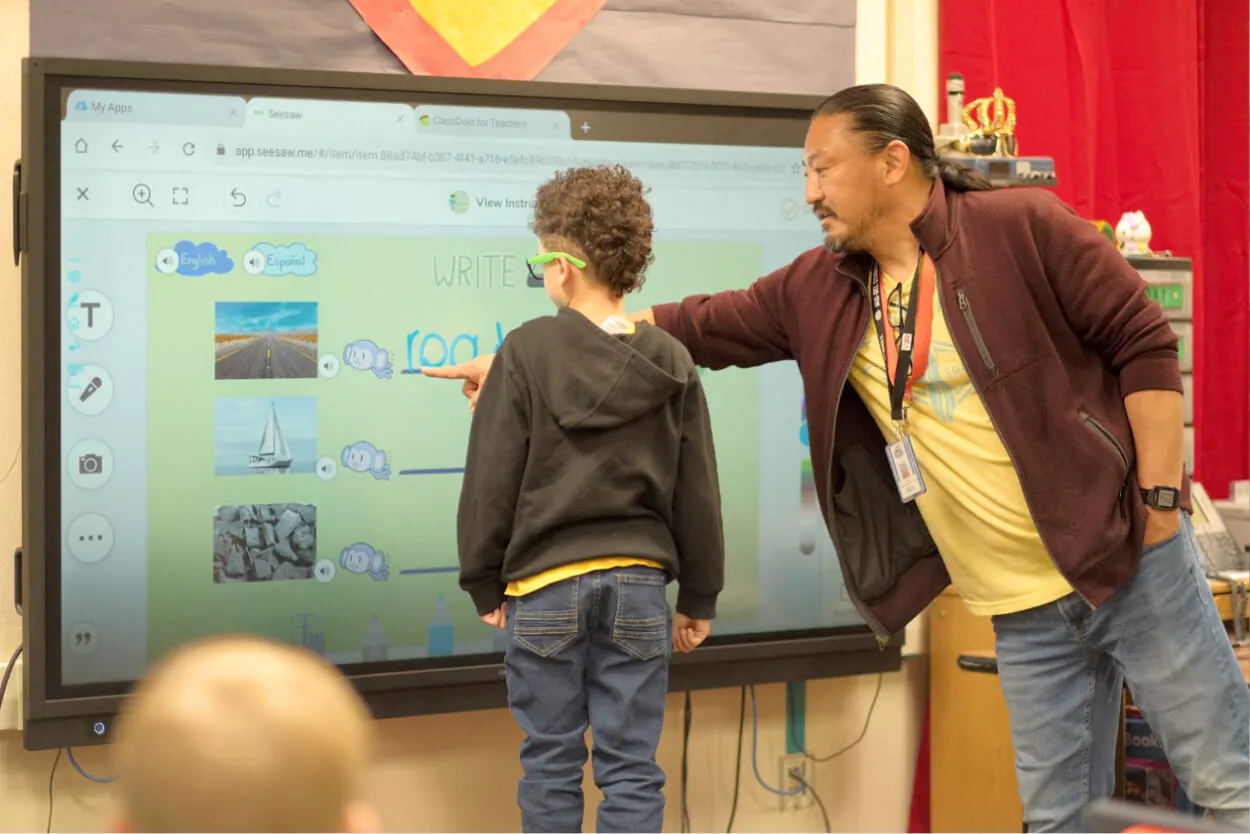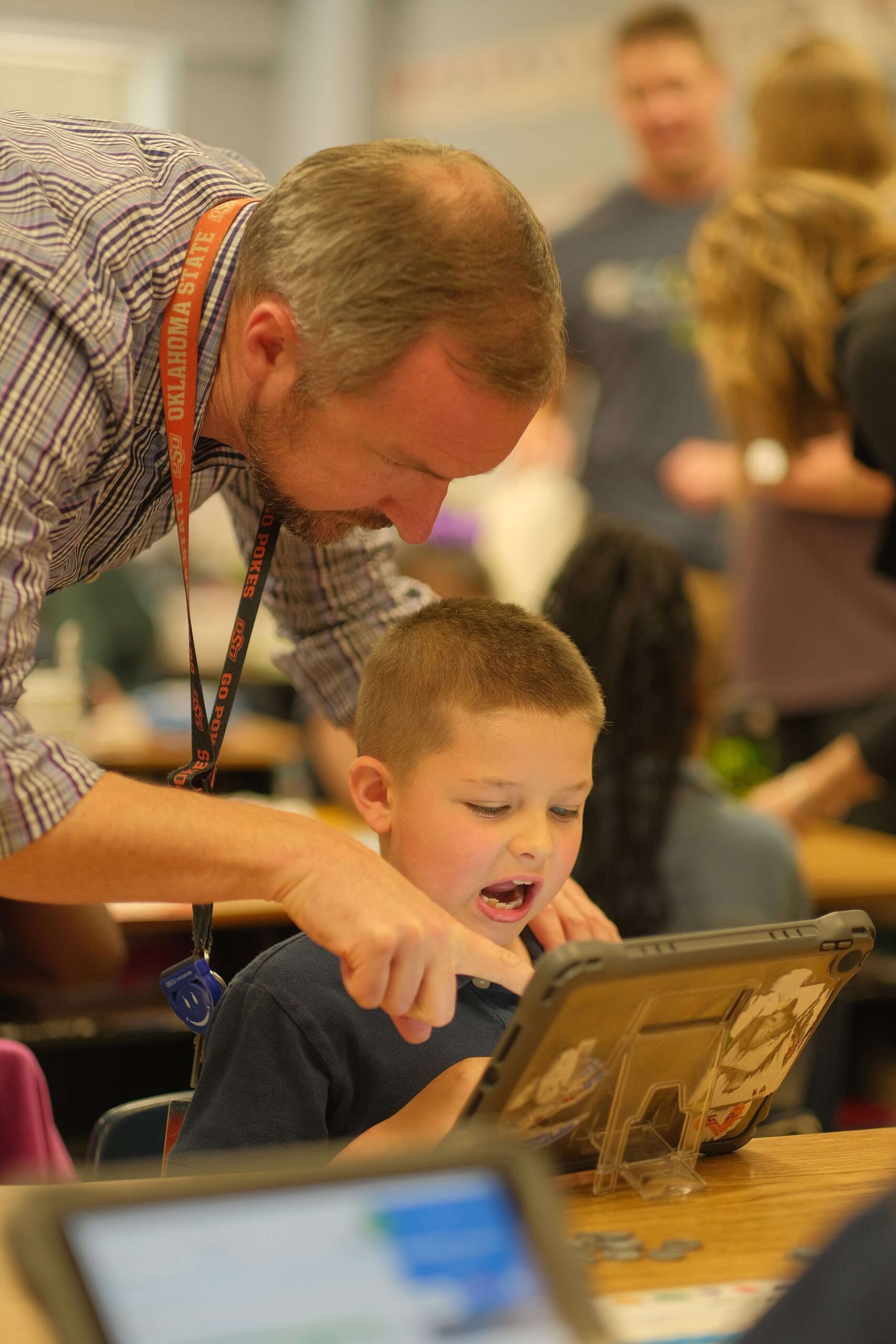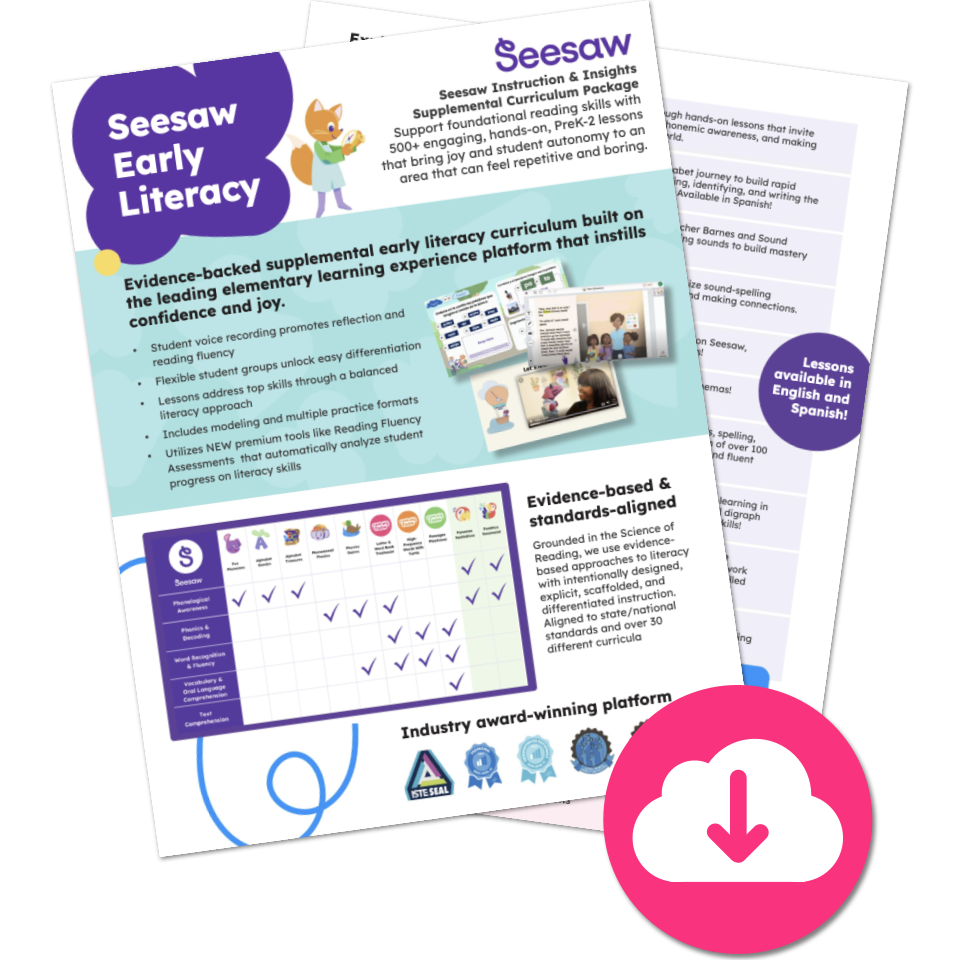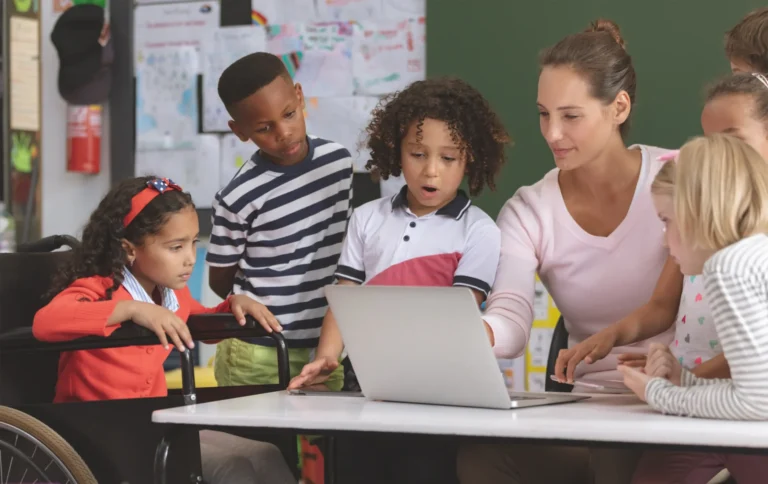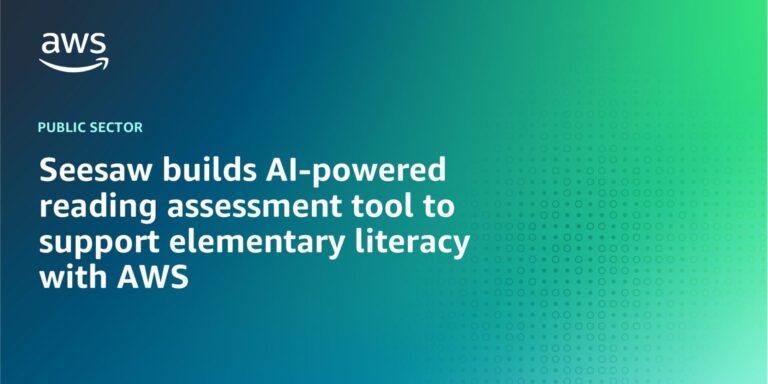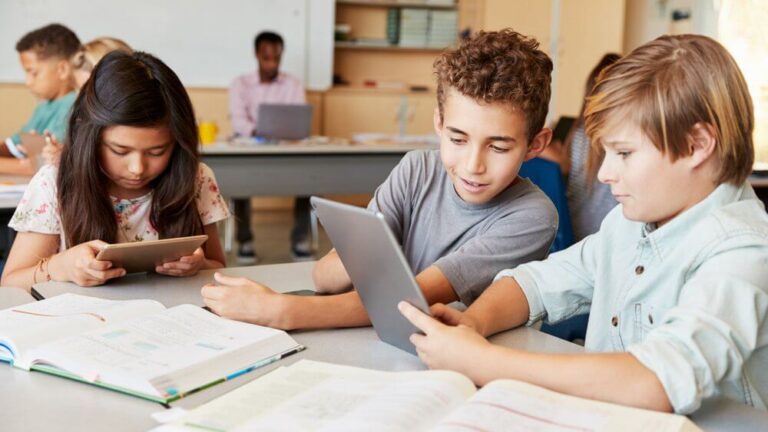For young learners, early literacy skills are essential building blocks. Educational institutions are responsible for implementing research-backed teaching methods that enable all students to excel academically and beyond. Early literacy development involves comprehending spoken language, expressing oneself verbally, decoding written text, and communicating in writing. Strong literacy skills are essential for continuous learning, civic engagement, and equal opportunity.
Educators, policy makers, and governments have been paying more attention to literacy instruction in the past few years, but it has always been a critical part of elementary education. Much of this attention comes from the post-pandemic effects; students not performing at grade level. Moreover, recent movements have highlighted the lack of evidence backing popular reading programs. Schools and districts are currently reviewing their literacy programs and searching for research-backed, evidence-based solutions for early literacy.
Schools are constantly looking for additional programs and will often adopt multiple solutions. This is because early literacy skills require ample, differentiated practice. Going beyond what the core curriculum has to offer enables students to stay more engaged and learning to be differentiated easier.
Seesaw’s early literacy content and instructional tools support schools’ needs for high quality supplemental curriculum. But don’t take our word for it. Hear from our community of educators the secrets that make Seesaw the perfect tool to unlock powerful early literacy growth.
How has Seesaw revolutionized word recognition activities and early literacy development in your classroom?
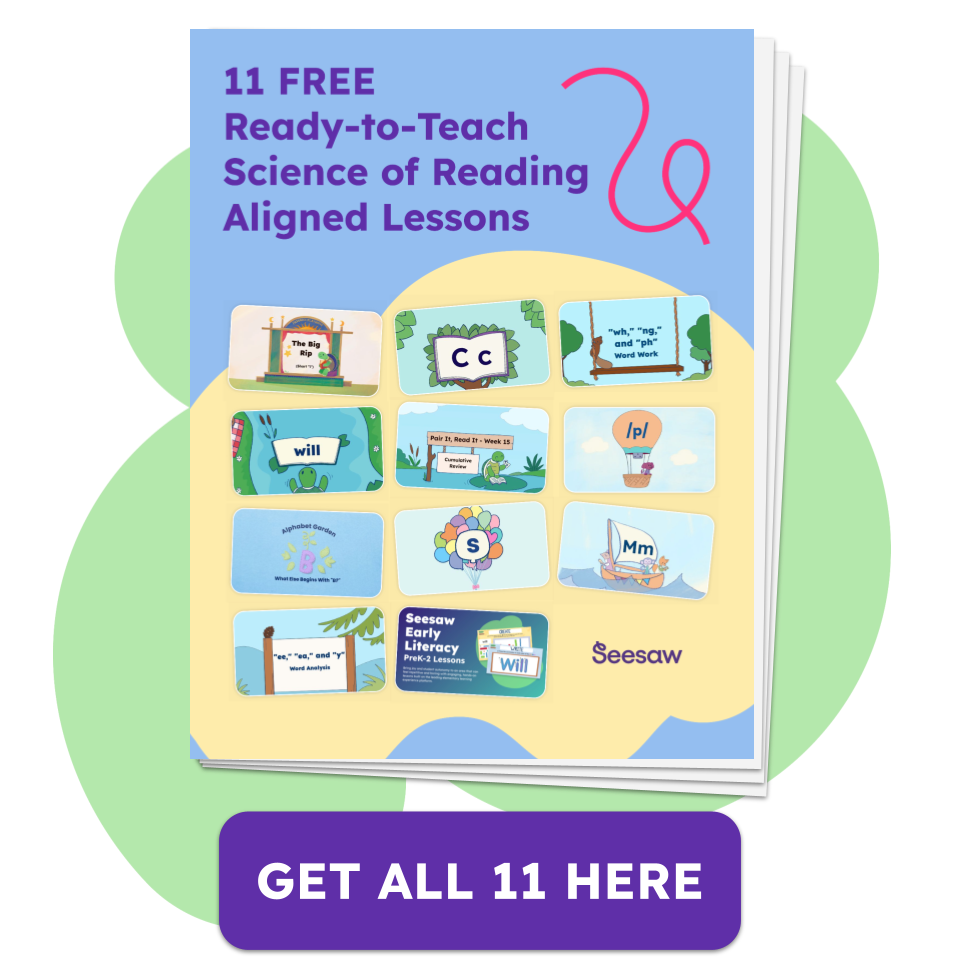 “I love to see growth in students’ reading and spelling. A few years ago I looped with my class which included a few students who were well behind reading level. After two years of doing a reading intervention with them, getting them more interested in reading, and using Seesaw for spelling and phonics pattern sorts and work, I saw so much growth in these students by the end of the second year.” – Amara B., 5th Grade Teacher
“I love to see growth in students’ reading and spelling. A few years ago I looped with my class which included a few students who were well behind reading level. After two years of doing a reading intervention with them, getting them more interested in reading, and using Seesaw for spelling and phonics pattern sorts and work, I saw so much growth in these students by the end of the second year.” – Amara B., 5th Grade Teacher- “Seesaw allows all my students to record themselves. This allows all students to engage throughout the lessons versus just listening to the teacher speak.” – Margaret O., 2nd Grade Teacher
- “Seesaw made small group instruction a breeze as each person had what they needed.” – Gwendolen G., Dyslexia Interventionist
- “I am able to differentiate my students’ learning with Seesaw. Seesaw allows me to provide the perfect amount of support.” – Diane D., 4th Grade Teacher
These teachers have found that using Seesaw has been a crucial tool in dramatically improving their early literacy instruction. By adopting Seesaw’s easy to use platform and accessible tools, they were able to help their students get back on track quickly and easily.
How is language development practice made better when done with Seesaw?
- “Our reading program has a really boring phonics piece that is all just pencil and paper. I created assignments to go with the program and the students are so much more engaged and invested in their learning!” – Julie B., 2nd Grade Teacher
- “Students can be assigned different activities based on their own learning pathways. Then use Seesaw tools to reflect and share. This allows students to progress at their own rate and use Seesaw to share their growth!” – Mckinzie K., 2nd Grade Teacher
- “During reading groups, I can work with students at different phonics levels, while others can be doing high quality Seesaw activities. For students that are new to English, Seesaw is a life-saver.” – Carly A., Year 2 Teacher
Early literacy programs emphasize practice and repetition. However, this may be at the cost of losing student engagement and interest. Seesaw enabled these teachers to reengage learners and provide them with specific learning opportunities tailored to their needs by providing them with the tools they needed.
How does Seesaw enable early intervention for all learners?
- “With Seesaw, I was able to pinpoint specific at risk students, thus allowing early intervention and an opportunity to close the gaps much earlier in the year.” Crissy C., PreK Teacher
- “The best thing about Seesaw is the ability to respond to and receive feedback orally. It opens doors for success along the way.” – Christy D., 2nd Grade Teacher
- “When seeking progress monitoring documentation in an early childhood setting, performance based tasks are where the action is at. Seesaw as digital portfolio is perfect for tracking their progress.” – Debra M., Instructional Coach
The ability to make faster, better decisions that support concrete evidence and learning artifacts is one of the key characteristics of effective teaching. Through Seesaw’s digital portfolio, teachers gain the ability to do just that making it the perfect teaching partner.
How does Seesaw foster a safe and supportive learning environment, particularly for students with diverse learning needs?
- “Seesaw enables me to record video scaffolds and prompts so that children who are working at a level significantly below their peers have the support they need, this has an enormous positive impact on pupils’ confidence and self-esteem.” – Joanna C., Year 6 Teacher
- “Loading daily Phonics activities in Seesaw for students enabled them to work independently using the various tools to show what they know, so I was able to further differentiate their instruction during small group time to meet their needs.” – Lisa W., 3rd Grade Teacher
- “I use Seesaw for its accessibility features to help meet the needs of all of my different types of learning. Some prefer to speak than write. Some need visuals and the ability to actually move items around. My students really love doing phonics lessons in the Seesaw program.” – Katherine G., Reading Specialist
Providing equal access to content means removing learning barriers, especially for diverse learners. By providing students with a safe and supportive learning environment through Seesaw, they were able to see themselves in the content and access it at a level they were comfortable with.
How has Seesaw involved families in early literacy instruction and supported students’ reading development outside the classroom?
- “We use Seesaw to post a video of reading a just right book and send it to their parents. Parents can see the text the child is reading as well as see their child in the video. They love listening to their child read on a daily basis and can see the reading growth.” – Carol J., Inclusion Teacher
- “Seesaw has allowed me to make lessons based on our home readers that students can access at home. I engage with parents about how they are supporting their child with their reading. I hear students read, give feedback and engage with the learning even while at home.” – Maria-Anna M., K-6 Coach
Involving families in learning not only keeps them informed about growth on a regular basis, but also establishes a strong partner for at home support. Through Seesaw, these teachers strengthened their relationship with their families and fostered support for home learning.
Seesaw is a ESSA-Validated Early Literacy Solution
Seesaw’s supplemental curriculum is validated by LearnPlatform, a third-party edtech research company, to satisfy Level IV requirements according to Every Student Succeeds Act (ESSA). The programs systematic evidence-based practices and explicit instruction of phonological and phonemic awareness, phonics, oral reading fluency, vocabulary, and reading comprehension align with research-based practices to accomplish this task. Read the full report outlining how Seesaw satisfies this validation here.
Experience the Seesaw Difference
Seesaw has proven itself to be a powerful tool for enabling more effective early literacy instruction. The ability to cater learning to different learning styles, keep students engaged, and connect families fills a niche that many schools desire. With our research-based content, we aim to provide flexible implementation, engaging learning, and build a passion for reading in every classroom. Our curriculum supports foundational reading skills with more than 500 lessons that bring joy to an area that may normally feel dull & boring.
Try out the following collections, which also include formative assessments, to support your students in literacy:
- Fun Phonemes, also offered in Spanish, helps students build phonemic awareness. By listening to, identifying, and matching sounds, students build mastery of each phoneme.
- Alphabet Garden introduces learners to letters where they practice letter formation, phonemic awareness, and making connections to each letter in the real world.
- Alphabet Treasures assists students in building rapid letter recognition and identification in multimodal ways.
- Phenomenal Phonics, also offered in Spanish, helps students recognize sound-spelling relationships by sorting, blending, segmenting, and making connections.
